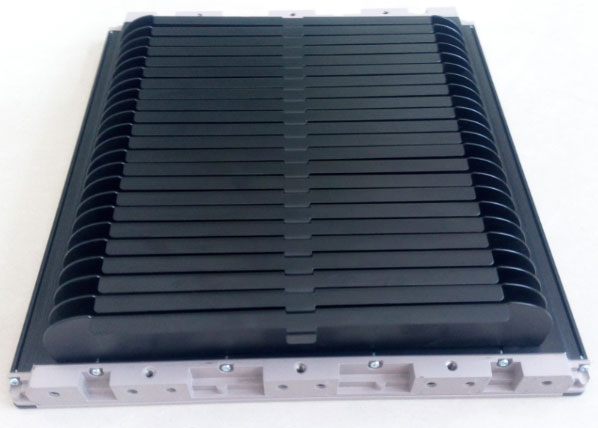Nowadays, the electronic products around us are becoming more and more diverse. When we choose, we will not only compare them in terms of their functions, but also consider them in terms of appearance. The thin and light appearance is the current development trend of electronic products. Therefore, it will also face a challenge, that is, the internal space of electronic products has become more and more narrow. How to fully help electronic products to dissipate heat in a limited space is a matter that requires special attention.
This requires the radiator to be lightweight, strong thermal conductivity, and strong plasticity. Only by relying on the limited size to exert the maximum heat dissipation performance, can we truly protect the heat dissipation of electronic products. So what kind of material can we choose to make a radiator that meets the requirements of the external dimensions without losing the heat dissipation effect? Let ’s take a look at some of the common materials used to make radiators today.
First, plastic radiator
Plastic radiators have been developed and promoted in Zhejiang, Beijing, Shandong, Xi'an and other places. Common plastic radiators are made by filling some metal oxide powder, carbon powder, fiber or ceramic powder in plastic to improve it. Thermal conductivity. This kind of plastic heat sink is extremely light in weight, which is in line with the needs of electronic products. In addition, its appearance is highly plastic, and its low cost has been favored by many manufacturers.
However, compared with heat sinks made of metal alloys, its thermal conductivity is not stable, and the thermal conductivity changes greatly. It cannot ensure that it can perfectly adapt to the working environment. It may even deform after a long working time, so its safety and stability There is still room for improvement.
Copper heat sink
The chemical nature of copper is unstable, and it is difficult to react with oxygen and water in the air at room temperature. Therefore, manufacturers do not need to carry out sophisticated and complicated post-processing of copper radiators to ensure its long life. Secondly, the heat dissipation capacity of the copper heat sink is considered to be excellent. It often absorbs heat quickly and dissipates heat quickly. The heat dissipation capacity and corrosion resistance are stronger than aluminum.
Although the copper heat sink has its advantages, the price is often very expensive, and it is generally not recommended to consider the use of such heat sinks due to limited economic conditions. And the quality is very far from meeting the requirements of thin and light electronic products.
3. Aluminum profile radiator
Aluminum alloy is considered to be the hottest radiator manufacturing material on the market today. Among them, aluminum alloy 6063 and 6061 are relatively high-quality. Although the heat dissipation performance is not as good as copper, but the heat dissipation coefficient can reach 201W / mK, which can fully meet the demand for heat dissipation of electronic products. In addition, its light weight, easy processing, beautiful appearance and affordable features make it particularly widely used.
Zhigao's electronic profile radiators use aluminum alloy 6063/6061, and in order to make the produced radiators more decorative, longer life, stronger heat dissipation performance, multiple processing processes will be performed on the product. Through sand blasting, wire drawing and laser technology, the surface of the shaped radiator is cleaner and smoother, and the decoration is stronger. In addition to the electroplating, anodizing and baking paint processes, the plating layer, oxide layer and special material paint are added to the surface to improve the overall wear resistance, corrosion resistance and heat resistance of the heat sink, thereby improving the performance and durability of the heat sink Degree has been qualitatively improved.
Four, graphite radiator
Graphite is a new type of heat-conducting and heat-dissipating material. Although it is mainly made of a single carbon element, it has thermal conductivity comparable to that of metal materials. Compared with copper and aluminum, it is lighter in quality and more stable in chemical properties. To the ultra-thin, it is really a very good radiator material. However, the graphite material itself is very expensive, and the processing and die-cutting management costs of graphite radiators are sometimes even more expensive than the material costs. Therefore, the cost of using graphite radiators is very expensive, and the applications are not very widespread.
Today, with the development of thin and light electronic products, Chicco strives to adapt to the development trend and adopts high-quality materials to customize electronic radiators. It is lightweight and ultra-thin in quality. service.


